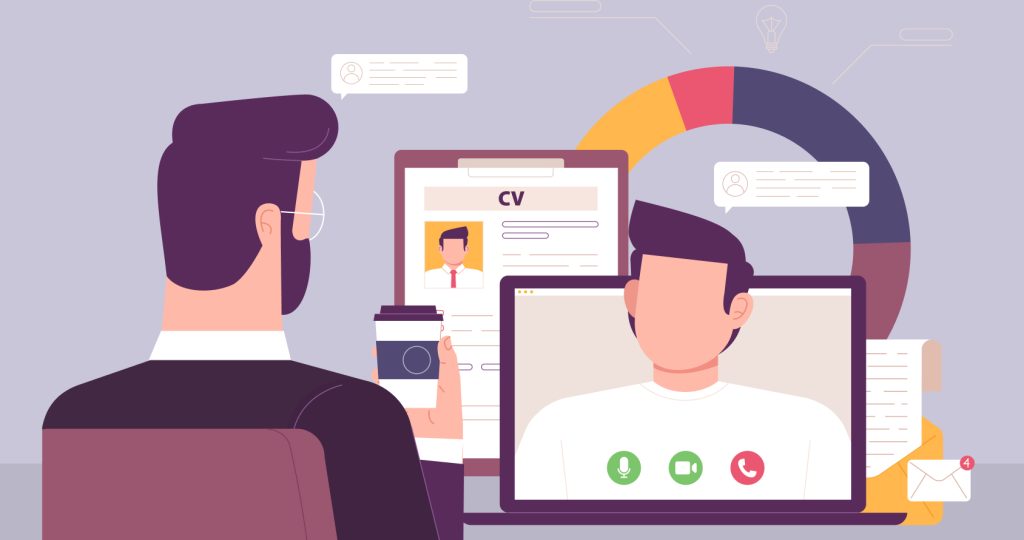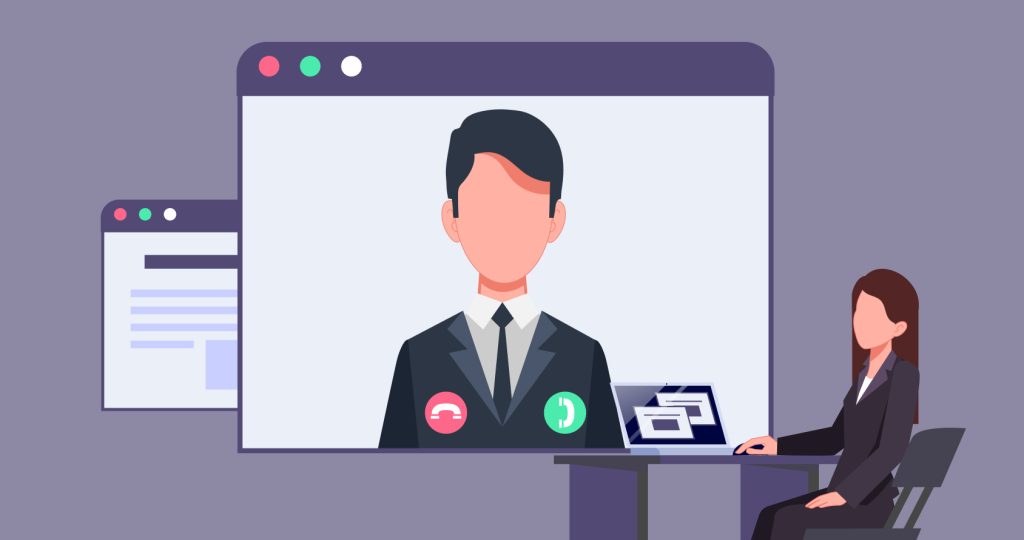The virtual interview is the process of recruiting a candidate for a job role using technology as a communication medium. It is also known as a video interview and allows HR to conduct interviews remotely. It is a convenient method of interviewing and is cost-effective, time-saving, and a medium to expand the potential talent pool. It is a more efficient way that eases interview scheduling.

The Meaning and Importance of Virtual Interview
The virtual interview is an automated process of conducting an interview online. HR uses virtual interviews as a standard way of assessing the candidate’s potential initially. It also allows people to participate in an interview that they may have missed earlier for not reaching the interview venue on time. It also helps discover better talents by using a more efficient recruitment process. The organizations can also evaluate their candidates online by using virtual interview techniques.
5 essential methods for an effective virtual interview process
The video interviewing method mostly follows the style of the traditional interview method. However, some things should be kept in mind as the hiring manager and the candidate connect for the first time in an online mode. The key areas to pay attention to are giving candidates enough time to prepare for the interview, giving them relevant questions, creating a standardized rating system, keeping the candidates informed via email or phone, etc.

Giving candidates adequate time to prepare
Candidates should be given enough time to prepare for the interview. It is not recommended to schedule the meeting on the same day as the first call.
Giving them time helps them prepare for the interview and eventually crack it. In short, it makes the candidate comfortable. It reflects professionalism, the company’s culture, and thoughtfulness for the potential candidates.
Preparing a relevant questionnaire
Preparing the interview questions in advance is essential to make virtual interviewing hassle-free. Questions should be relevant and related to the job role.
A possible method could be making a list of common job-related questions for all the candidates as part of the standardized rating system. It would help if you also prepared questions related to the candidates’ experience and qualifications.
Testing equipment prior to the interview
Virtual interviews need a laptop with a stable wifi connection, a working mic and camera, and pre-installed software programs like Zoom or Google Meet. It is essential for the employer and the candidate to ensure that the technology works efficiently.
We advise the candidate and the interviewer to join the meeting platform 5-10 minutes before an interview to avoid last-minute chaos.
Observing body language of candidates
The virtual model of interviewing gives very little flexibility in observing the candidates’ body language. Observing the candidates way of communicating, facial expressions, and eye contact is a way to understand their body language. You should also check the professional body language of the candidates, like sitting up straight in front of the camera, possessing a smile on their face, etc. This helps in assessing the candidate’s body language.
Following up with the candidates
After the interview is over, keeping the candidates in the loop is essential. Sending a thank you email for making time for the interview within 24 hours is a good gesture and builds an employee-employer relationship.
Also, it is essential to inform the candidates regarding the selection made and tell them about the future positions.
Preparation for virtual interviews
The virtual interview process is commonly practiced in today’s world. The pandemic’s stay-at-home orders have confined all to their homes. This has forced companies to make adjustments in their hiring process.
Remote interviews can make good impressions as long as simple guidelines are followed- preparing for the interview, asking questions beforehand, and checking the technology. These things will make the entire virtual interviewing process easy.
Frequently asked questions(FAQ)
5 popular methods for interviewing candidates are:
1. LinkedIn. Employers are using the power of LinkedIn to find top talent for their organizations.
2. Skype/Facetime. With today’s technology, it’s easier than ever to interview a candidate when they are not local.
3. Phone interview.
4. In-person interviews.
5. Informal meetings.
Set the Bar. Go the extra mile to show up professionally on- and off-camera.
Be Understanding of Technical Challenges. Be mindful of the candidate’s professional etiquette online but give grace for technical errors.
Adapt the Process.
Record and Review Later.
Instead, virtual interviews require a level of preparation not necessary for in-person interviews. Primarily, when you participate in a virtual interview you are responsible for creating the environment for the interview because rather than it taking place completely in one office it is taking place in two.


